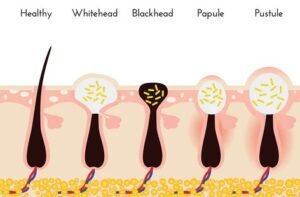Scientific research and anecdotal reports suggest the answer may be yes. These subtle, often subconscious sound waves might hold the key to promoting more consistent, restorative sleep—especially for those struggling to reach or maintain the deeper phases of the sleep cycle.
Let’s explore how low-frequency sounds interact with the brain, why deep sleep matters so much, and what the current evidence says about this intriguing audio-based approach to better rest.
Understanding the Sleep Cycle
Sleep is not a single uniform state—it’s a highly dynamic process consisting of several stages:
- Stage 1 (Light Sleep): A transitional phase as the body relaxes.
- Stage 2: The body temperature drops, heart rate slows, and brain waves begin to change.
- Stage 3 (Deep Sleep): Also called slow-wave sleep, this is the most restorative phase, when the body repairs tissue, boosts immune function, and consolidates memory.
- REM Sleep: Characterized by dreaming, REM (Rapid Eye Movement) is essential for mood regulation and cognitive function.
Deep sleep, particularly stage 3, is where the body truly rests and heals. Unfortunately, this stage can be difficult to reach—especially as we age, experience stress, or deal with disrupted sleep schedules.
What Are Low-Frequency Sounds?
Low-frequency sounds refer to audio waves with frequencies typically between 0.5 to 100 Hz—far lower than the range of human speech or music. These frequencies are often used in sleep soundscapes, binaural beats, white noise machines, and brainwave entrainment technologies.
Some examples include:
- Delta waves (0.5–4 Hz): Naturally occurring in deep sleep.
- Theta waves (4–8 Hz): Associated with relaxation and early sleep stages.
- Brown noise: A deeper, more intense version of white noise.
- Vibrational sound therapy: Instruments like gongs, didgeridoos, or bass-heavy tones.
These sounds are typically not “heard” in the conventional sense—they are often felt or perceived subtly, working in the background to influence brain activity.
How Low-Frequency Sounds Influence Deep Sleep
The connection between low-frequency sound and deep sleep lies in brainwave entrainment—a process in which the brain’s electrical patterns begin to synchronize with an external rhythmic stimulus.
1. Promoting Delta Brainwave Activity
Delta waves are dominant during deep, dreamless sleep. When low-frequency sounds mimicking delta rhythms are played during sleep, the brain may be encouraged to stay longer in deep sleep or enter it more easily.
By “entraining” the brain to follow a delta pattern, some researchers believe low-frequency sounds can help lengthen stage 3 sleep, which leads to more effective physical and cognitive restoration.
2. Reducing Nighttime Arousals
Background low-frequency noise—such as brown noise—can mask environmental disturbances like traffic, snoring, or hallway noise. This sound masking effect helps prevent sudden arousals or shifts back to lighter sleep stages.
A more stable sleep environment increases the likelihood of maintaining deep sleep throughout the night.
3. Slowing the Heart Rate and Nervous System
The deep, consistent tones of low-frequency sounds can signal the parasympathetic nervous system—the “rest and digest” mode of the body—to take over. This transition reduces stress hormones and slows heart rate, supporting the onset of deeper sleep stages.
Scientific Evidence: What the Research Says
While research on this topic is still emerging, several promising studies suggest low-frequency sound can positively influence deep sleep:
● Binaural Beats and Sleep Quality
A number of small studies have shown that binaural beats—a method where two slightly different frequencies are played in each ear to produce a low-frequency “beat” in the brain—can increase time spent in slow-wave sleep.
Participants exposed to delta-range binaural beats before and during sleep showed better sleep continuity and fewer nighttime awakenings compared to control groups.
● Acoustic Stimulation and Deep Sleep Enhancement
Researchers at Northwestern University used acoustic stimulation—brief pulses of low-frequency pink noise—synchronized with the brain’s natural slow waves. Results showed improved slow-wave activity, which correlated with better memory consolidation the following day.
This indicates not only deeper sleep but also improved cognitive function as a result.
● Brown Noise and Relaxation
Brown noise, characterized by its low-frequency rumble, has shown potential in calming the nervous system and helping users fall asleep faster. While its direct impact on deep sleep is still being studied, many people report fewer awakenings and more restful sleep when using it.
Who Can Benefit from Low-Frequency Sleep Sounds?
Anyone looking to improve sleep quality may benefit from trying low-frequency sounds, but certain groups may find it particularly helpful:
- Light sleepers who wake easily from external noise
- Older adults experiencing reduced deep sleep due to age
- People with insomnia who struggle to stay asleep
- Shift workers trying to sleep during the day
- Anxious individuals whose racing thoughts delay sleep onset
Even those without sleep disorders may experience better sleep depth, continuity, and mental clarity upon waking when incorporating these sounds into their nighttime routine.
How to Use Low-Frequency Sounds for Better Sleep
Getting started doesn’t require expensive equipment. Here are practical ways to incorporate low-frequency sound into your nightly routine:
1. Use a White or Brown Noise Machine
Look for devices that specifically offer brown noise, delta waves, or low-frequency hums. These can run all night to mask disruptions and promote a calm sleep environment.
2. Try Binaural Beats or Sleep Sound Apps
Numerous apps offer delta or theta wave programs for sleep. To use binaural beats effectively, wear headphones so each ear receives a slightly different tone.
Popular options include:
- Brain.fm
- Insight Timer
- Sleep Sounds by Relaxio
3. Listen to Low-Frequency Music or Soundscapes
Search for sleep playlists featuring ambient music tuned to 432 Hz or lower, or meditation tracks labeled as “deep sleep” or “delta wave” frequencies.
4. Limit Other Sensory Input
To enhance the impact of low-frequency sound:
- Keep the room dark
- Avoid screens before bed
- Practice a consistent sleep schedule
Reducing other sensory stimuli lets the brain focus more on the audio cues designed to entrain it into deeper rest.
Are There Any Risks?
For most people, low-frequency sound therapy is safe and non-invasive. However, some may find:
- Binaural beats disorienting with headphones
- Loud low tones unpleasant or anxiety-inducing
- Overuse of sound machines potentially masking underlying sleep disorders
If sleep doesn’t improve or worsens over time, it’s wise to consult a sleep specialist to rule out medical conditions like sleep apnea or restless leg syndrome.
Final Thoughts
Low-frequency sounds may seem subtle or even unnoticeable at first, but their potential impact on deep sleep is powerful. By aligning with the brain’s natural rhythms, these tones can create a calming audio environment that promotes deeper, more restorative sleep—without the side effects of medication.


